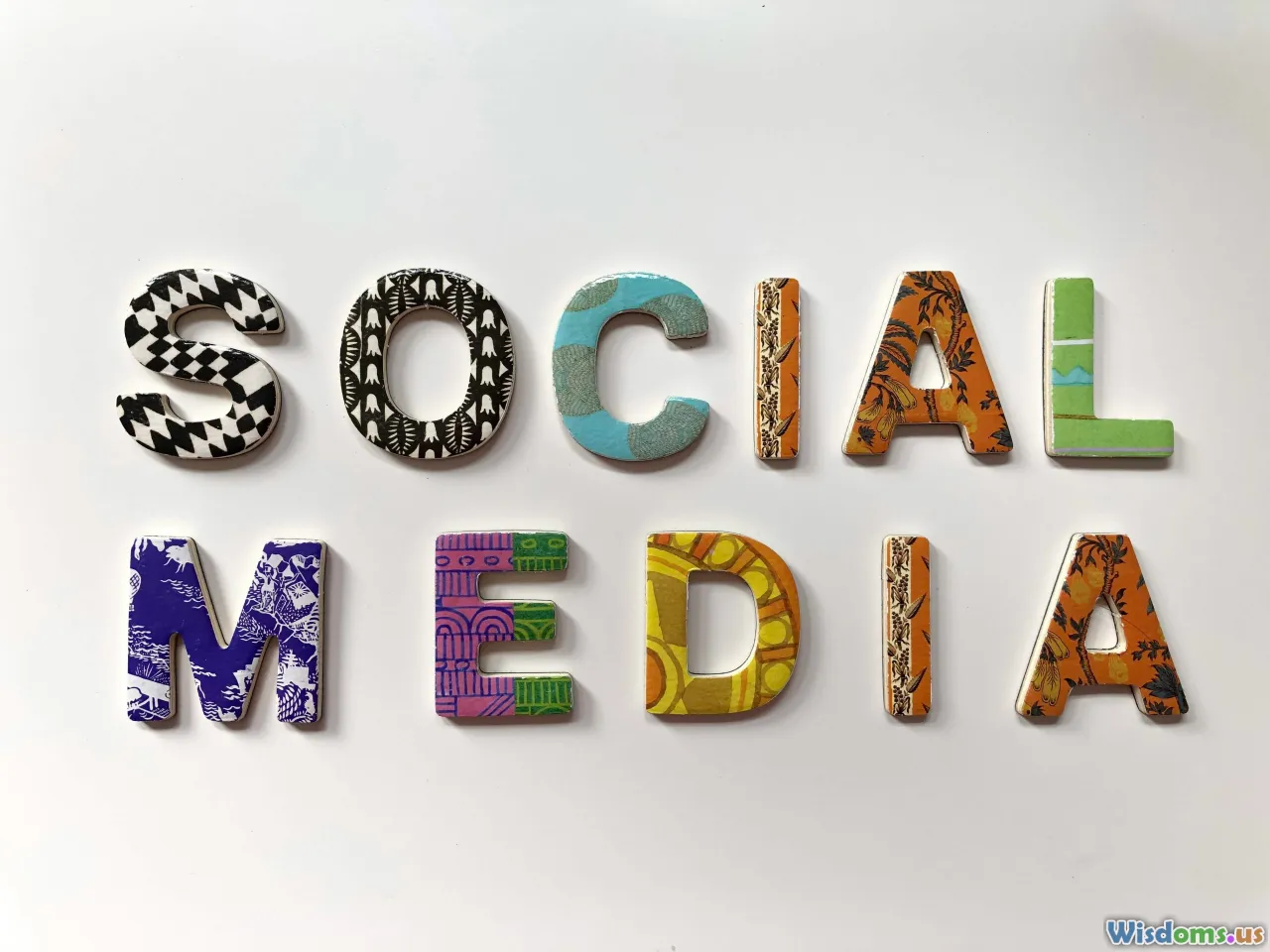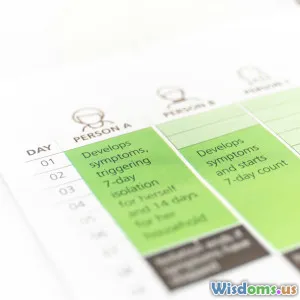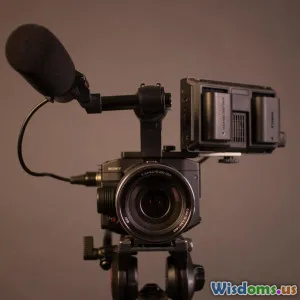
Breaking Down the Anatomy of a Compelling Headline
15 min read Explore the key elements that make headlines irresistible and effective for readers and SEO. (0 Reviews)
Breaking Down the Anatomy of a Compelling Headline
A single headline is often the dividing line between an article that dazzles and one that drifts into obscurity. Whether you're writing news stories, marketing emails, or blog posts, the headline is your chance to grab curiosity and guide eyes to read further. But magnetizing attention isn't mere luck; it's the result of applying principles, psychology, and craft. Let's break down exactly what makes a headline compelling, so you can implement these strategies with confidence and creativity in any industry.
The Purpose of a Powerful Headline

A headline has just one goal: to entice a reader to care enough to continue. It works as a gatekeeper and ambassador, hinting at the value within the main body of content while competing for attention in an information-rich environment.
Consider how many headlines you encountered just today—newsfeeds, inboxes, tweets, search results. Neil Patel estimates the average person is exposed to over 100,000 digital words daily, but only clicks on a fraction of headlines. The right headline makes content discoverable, memorable, and shareable.
Key functions of a strong headline include:
- Capturing Immediate Attention: With so much competition, the first few words must stand out instantly.
- Setting Reader Expectations: Informs what’s inside without misleading or resorting to clickbait.
- Encouraging Engagement: Creative, well-crafted headlines inspire sharing and discussion, extending a story’s reach.
Example: The New York Times Effect
Comparing "Stock Market Plummets After Federal Reserve Announcement" with "Wall Street in Turmoil: Investors Race for Cover" — the second headline leverages emotion and vivid verbs, painting a narrative rather than simply relaying facts. This increases the likelihood of clicks and shares.
Essential Ingredients of Magnetic Headlines

Not every headline is built the same, but compelling ones share universal characteristics. Break down these elements to craft openings that pass the scroll test:
1. Clarity Over Cleverness
A clever pun or playful alliteration can be memorable, but only if your audience immediately understands the topic. Studies by the Content Marketing Institute highlight that vague or cryptic headlines dramatically reduce click rates—clarity should always trump confusion.
For example: \
- Poor: "Brain Food: It’s All About the Nuts!" (Ambiguous—what exactly is the story about?)\
- Better: "7 Research-Backed Foods That Sharpen Your Focus" (Clear takeaway, benefit visible)
2. Power Words and Action Verbs
Words have energy. Active verbs and emotionally charged adjectives help headlines jump off the screen. CoSchedule analyzed over one million headlines and found that those with emotional, sensory, or action-driven words regularly outperform bland ones.
- "Unlock" instead of "Learn"
- "Master" instead of "Understand"
- "Essential", "Breakthrough", or "Surprising" add punch and intrigue
3. Specificity and Concreteness
Making a promise in your headline works only if it’s precise. Specificity breeds trust and engagement.
- "How to Save Money" becomes "How to Save Over $383 a Year on Groceries"
- "Tips for Better Sleep" evolves into "9 Science-Backed Tips for Deeper, Restful Sleep"
Concrete headlines leave little room for doubt about the content’s applicability.
4. Targeted Relevance
The best headlines speak directly to a specific readers’ interests, problems, or aspirations. Use language that matches your audience’s worldview and vocabulary.
- In niche communities, such as developers, "Essential Git Commands for Team Collaboration" outshines a generic "Helpful Coding Tips".
The Psychology Behind What Makes a Headline Work

Headline construction is rooted in psychological triggers that influence our behavior. Here’s how top-performing headlines leverage brain science:
The Curiosity Gap
Humans are hard-wired to resolve uncertainty. Well-known in journalism as the "curiosity gap," this technique creates just enough ambiguity to make the reader need to know more.
Classic example: "You Won't Believe What This Teacher Did For Her Students" — but for brands who wish to avoid clickbait, the key is balancing intrigue and information:
- "How One Teacher Raised Classroom Performance in 30 Days—Without Additional Funding" piques curiosity with a specific promise.
Emotional Triggers: Fear, Hope, Surprise
Emotion lends urgency and resonance. Consider how BuzzFeed transformed headlines in the digital era using formats like “X Ways You’re Doing ___ Wrong” (fear of missing out or making mistakes) or “What Happens Next Will Surprise You” (engages curiosity, anticipation).
Social Proof
Incorporating evidence in your headline, such as expert endorsements or impressive metrics, amplifies appeal.
- "Why 9 out of 10 Entrepreneurs Recommend This Tool" injects authority through a statistic.
- "What Harvard Nutritionists Eat for Breakfast (and Why)" leverages professional trust.
Headline Formulas and When to Use Them

There’s no need to start from a blank slate—well-tested headline formulae serve as reliable templates from which to build variants.
How-to Headlines
These imply both practicality and deliverable outcomes, which formats the reader for a solution-oriented reading mindset.
- "How to Write Product Descriptions That Triple Sales"
- Notable in B2B and instructional content.
List Headlines
Readers love numbers: headlines containing digits—especially odd numbers—command more attention according to research by Conductor. Listicles also indicate scannability and manageable chunking of ideas.
- "11 Habits of Highly Effective Remote Teams"
- "5 Hidden Reasons Your Website Isn’t Ranking"
Question Headlines
Questions invite the reader into a conversation and simulate self-inquiry.
- "Are You Making These Critical Leadership Mistakes?"
- Best deployed when your audience might be wondering the same thing or facing common obstacles.
Statement Headlines (Benefits-Driven)
Underscoring what the reader stands to gain.
- "Double Your Reading Speed With This Simple Technique"
- Both compelling and transparent.
Comparison Headlines
Comparison draws contrast, which helps highlight value. Consider:
- "Facebook Ads vs. Google Ads: Which Is Best for Your Business in 2024?"
- Useful for product reviews, service analysis, and trend comparisons.
Crafting Headlines for Different Platforms

What works on Twitter may flounder on LinkedIn, and what sparkles on a business blog might fall flat as an email subject line. Success lies in respecting the platform and its user context.
Social Media Headlines
Brevity and punchiness rule. Twitter/X allows about 280 characters, but most users only see the first 50–70.
- Prioritize front-loading important words.
- Use hashtags sparingly and wisely.
- Emphasize emotion or immediacy: "Breaking: Major Update to iOS Today"
Blog and Long-Form Article Headlines
You have more real estate for depth and specificity.
- Don’t be afraid to be detailed: "The Comprehensive 2024 Guide to Home Solar Installation"
Email Subject Lines
Compete in a crowded inbox; must spark just enough interest to merit a click, with a hard focus on benefits or actionable promise.
- "Unlock 50% Off – Today Only on Our Digital Courses!"
- Personalization (insert names, localities, or niches) can raise open rates substantially.
Video and Podcast Titles
For audio-visual content, effectiveness relies on expectation-setting and possibility. Use emotional hooks and direct value-add.
- "How We Grew from 100 to 10,000 Subscribers in 90 Days"
- "5 Skills You Can Master in Quarantine"
Words, Length, and Structure: Optimizing Every Element

Word Count Sweet Spots
Research conducted by Outbrain and HubSpot finds ideal headline lengths:
- On average, 8–12 words work best for blog or digital article headlines.
- Email subject lines: 6–10 words yield higher open rates.
- Social posts: Often the shorter, the better due to space and user habits.
The Importance of Front-Loading
Online readers scan content rapidly, so placing keywords and value propositions early increases clarity. If writing for SEO, prioritize search phrases near the start.
Use of Brackets and Parentheticals
HubSpot reports that headlines with clarifying parentheticals—(Checklist), (Interview), (2024 Update)—boost click-through rates by up to 38%. These elements quickly convey format or freshness.
- "Master Account-Based Marketing [2024 Update]"
- "The Beginner’s Guide to Meditation (Podcast Episode)"
Testing, Tweaking, and Evolving Your Headlines

Not every headline will hit the mark on the first try. Savvy content professionals employ A/B testing, analytics, and audience feedback to iteratively optimize.
A/B Split Testing
Tools like Optimizely, Google Optimize, and email marketing platforms allow you to present different headline versions to segments of your audience. By measuring open rates, click-throughs, or time on page, you can empirically determine effectiveness.
Case Study: BuzzFeed runs up to 50 headline variants for a single story to maximize virality.
Content Analytics
Platforms such as Google Analytics or Hootsuite Insights can reveal which headlines draw most engagement, shares, and conversion. Tracking longitudinal performance lets you fine-tune approaches over time.
Leveraging Feedback
Encourage audience commentary or conduct informal surveys. “Which topic or headline grabs your interest most?” Direct insight from readers can surface preferences not immediately evident in quantitative data.
Pitfalls to Avoid: When Headlines Go Wrong

Even skilled writers stumble into headline blunders. Sidestep these common pitfalls for best-in-class results:
Clickbait and Overpromises
Short-term gain, long-term loss: Headlines that misrepresent, exaggerate, or fail to deliver create distrust and bounce rates. Always make sure the body lives up to the promise of the headline.
Burying the Lead
Don’t put the main benefit or topic at the end. Users often scan only the first few words—let them know what’s in it for them upfront.
Jargon and Overly Technical Language
Keep accessibility top of mind. Unless writing exclusively for a specialist audience, avoid complicated terms that cloud the message.
Ignoring Context
A catchy headline can still flop if it doesn’t fit the platform culture or target demographic.
Leveling Up: Advanced Headline Techniques

For those ready to move beyond basics, test-drive these sophisticated strategies:
Personalization
A Salesforce study found personalized subject lines are 26% more likely to be opened. Use CRM data, reader interests, or behavioral segments.
- "Marketing Strategies for SaaS Founders with Under $20K MRR"
- "A 7-Day Meal Plan for Busy Seattle Professionals"
Trend-Tapping and Timeliness
Hook into news cycles, viral themes, or annual events.
- "The Best 2024 Tax Hacks for Small Businesses"
- "5 Surprising Takeaways from Last Week’s Tech Expo"
Contrarian or Surprising Angles
Go against expectation to generate debate and interest.
- "Why You Shouldn’t Always Listen to Customer Feedback"
- Create a cognitive itch, leading to comments and shares.
Multimedia Add-ons
Pairing headlines with images, infographics, or video clips in platforms like Instagram or YouTube builds additional curiosity—and can improve recall in crowded feeds.
A truly compelling headline isn’t an accident; it’s a carefully engineered invitation, shaped by psychology and fine-tuned by data. The stakes are higher than they seem—every headline you write can shape reputation, grow brands, and turn casual readers into lifelong fans. Embrace the craft, experiment boldly, and watch your content rise above the noise.
Rate the Post
User Reviews
Popular Posts


















